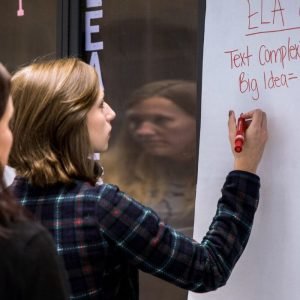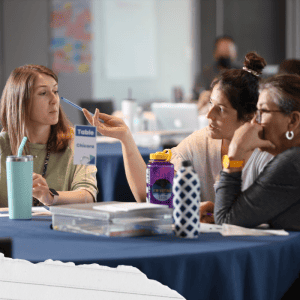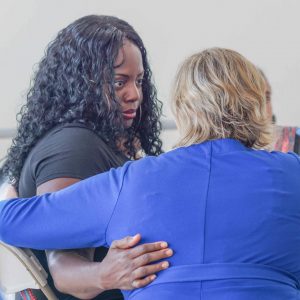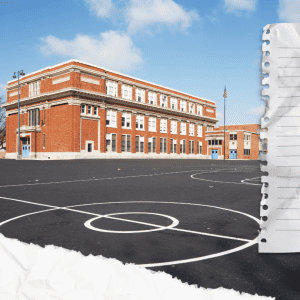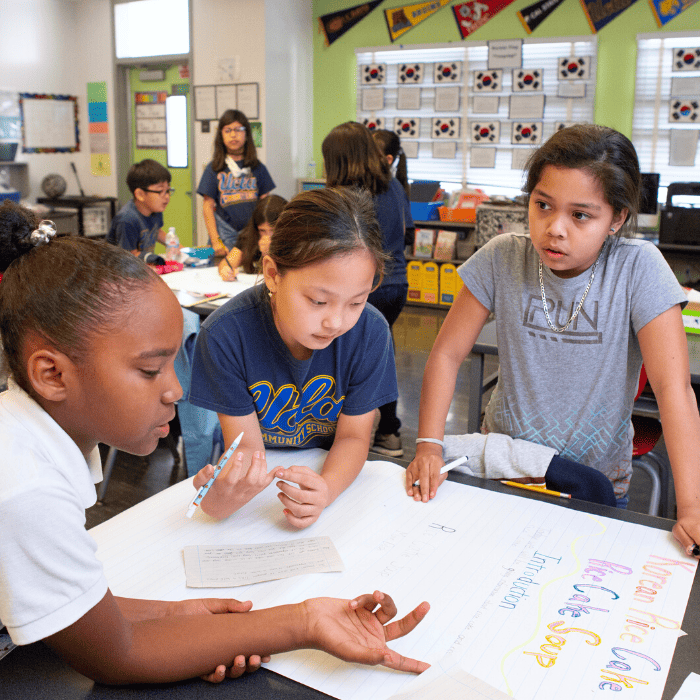
How a compelling vision supports deeper learning
11/18/2023

Vision Matters
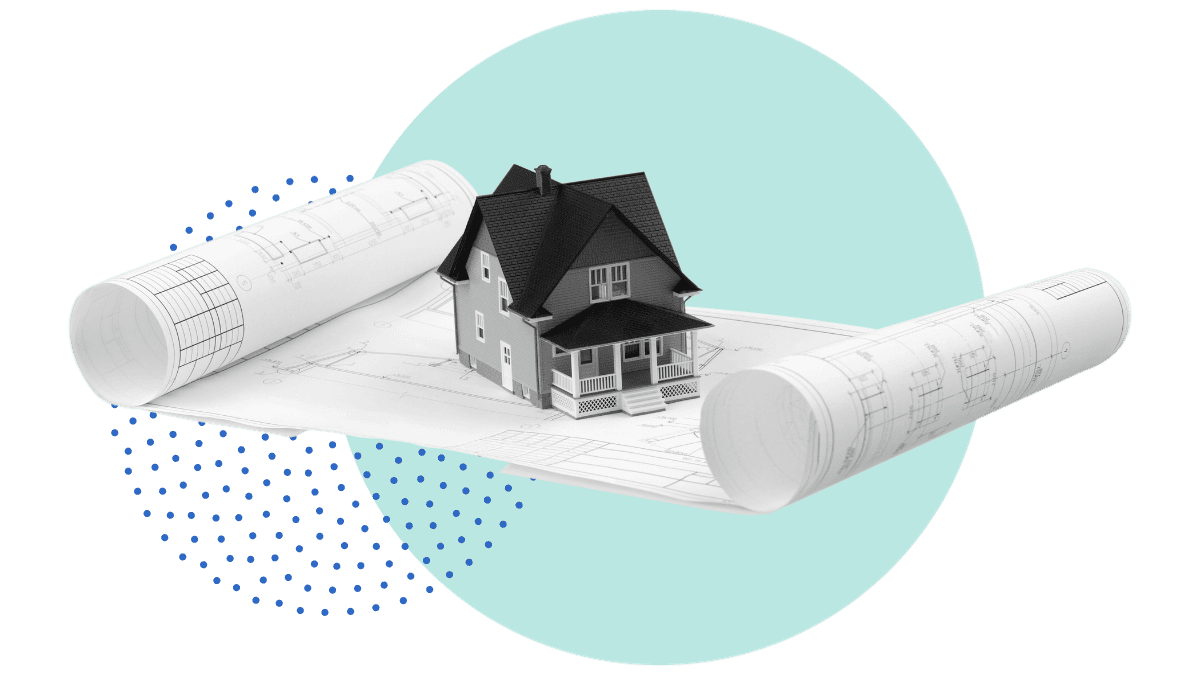 A shared vision is paramount in moments of great change, ambiguity, and untapped potential. It allows leaders to clarify choices, weigh short and long-term benefits and constraints, and prioritize.
A shared vision is paramount in moments of great change, ambiguity, and untapped potential. It allows leaders to clarify choices, weigh short and long-term benefits and constraints, and prioritize.
Within school systems, a defined instructional vision is the north star for success and coherent improvement across schools. Defining an instructional vision provides a shared framework and destination for all system elements to work together.
Here is why it matters.
- The vision provides a unified direction and goals for teaching and learning that the whole system can work towards coherently.
- Without a shared vision, efforts remain fragmented. It helps align all the key resources and supports like curriculum, professional development, roles, and responsibilities behind common, student-centered outcomes.
- Over time, revisiting and strengthening commitment to the vision allows the system to improve and adapt based on continuous learning. Better yet, you’ll be able to communicate with families and the community where you have gotten to and where there is still work to do.
A common barrier for a district when defining an instructional vision is a need for more buy-in from key stakeholders: school leaders, teachers, and instructional coaches who have not felt part of the decision-making process. Cultivating relationships based on trust and support between school leaders, district leaders, and teachers is necessary for any instructional vision to not feel like a top-down mandate, leading to resistance.
What does this look like? Here’s a brief example from our partnership with the Yakima School District.
Working to Define an Instructional Vision in Yakima
 Yakima School District (YSD) offers a promising example of the high-leverage, non-linear work of defining and investing others in an instructional vision.
Yakima School District (YSD) offers a promising example of the high-leverage, non-linear work of defining and investing others in an instructional vision.
Their district is the second-largest Latino-majority district in Washington state. Because of this, YSD has committed to ensuring that at least 75% of PK-5 schools will have access to a dual-language program by 2026.
When Leading Educators began working with the district on instructional improvement in 2021, leaders in YSD wanted to define a strategy for meeting the unique learning needs of multilingual learners (MLL). This underscored the necessity for district-wide adult learning before crafting a specific vision for student learning interventions could occur.
- In the second year, YSD recognized a need for better ELA instructional materials as a foundation for teachers to support their students. With support from LE, the district started a curriculum adoption committee and process.
- Within mathematics, teachers and leaders have been eager to work together on priority standards, and they are eager for shared learning. Teachers have been willing to incorporate new instructional materials in their lessons, especially because of the focus on foundational skills that many students are still building. Despite these strengths, many educators still feel a need for more consistent direction so there is less unpredictability in students’ experiences from classroom to classroom and from school to school.
In the current 2023-24 school year, we are supporting YSD with a roadmap for future curriculum implementation and instructional improvement. This partnership will prioritize creating an updated instructional vision, a framework for instructional leadership, and a plan to develop the instructional leadership of all school leaders. This will establish shared ideas of what excellent instruction should look, feel, and sound like for every child in YSD to inform future work.
Throughout the partnership, key leaders have held and communicated a vision for improvement rooted in distributed leadership and using high-quality instructional materials amid significant organizational changes and pandemic disruptions. This final scope of work will create a pathway and focus for intentional instructional leadership development that will continue long after the partnership with Leading Educators ends.
High-Leverage Actions
To be clear, teaching and learning in a district are complex and don’t always work together coherently due to often being spread across different departments. Our conditions framework provides a structured way to assess how well your district systems align around a shared vision for teaching and learning.
When your district has a defined instructional vision, this creates an environment where real instructional improvement can take root for sustainability over time. Teachers will have clear goals and support to focus on student mastery. Leaders at all levels will be empowered and accountable for driving progress.
Here are some questions to consider when defining an instructional vision:
- What foundational beliefs and priorities guide your approach to student learning outcomes, and how do these principles shape your educational vision?
- To what extent do your existing goals, curriculum, and assessments align with these core beliefs, ensuring a cohesive and purposeful framework for student success?
- How are you actively addressing every student’s academic, wellness, and belonging needs within the overarching vision, ensuring a comprehensive and inclusive approach that meets the demands of grade-level standards?
- What processes and structures are in place to introduce and sustain a deep commitment to our educational vision over time among all stakeholders?
- What metrics and indicators will we use to gauge the success of implementing this vision and driving continuous improvement in our instructional practices?
Reflect
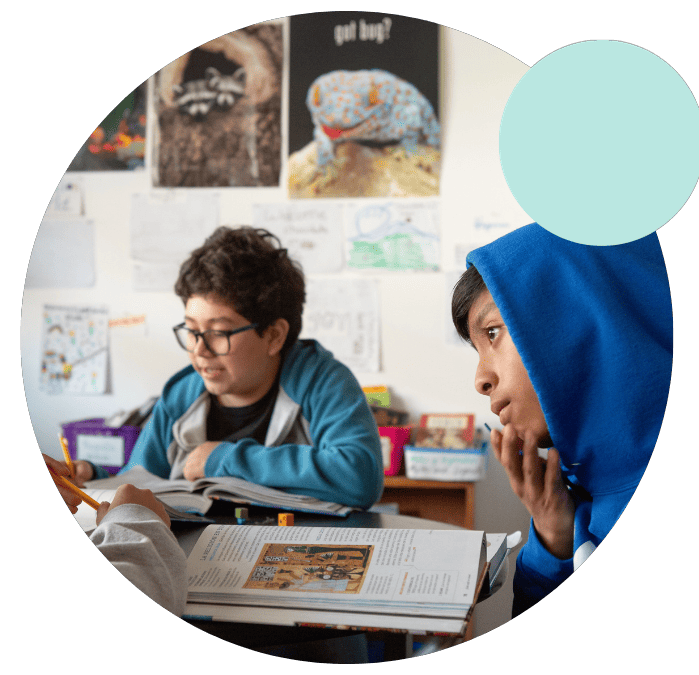
By viewing your district through this conditions lens, you gain insights into where systems work well and need alignment. It becomes a roadmap for prioritizing resources to maximize impact in classrooms. Most importantly, it establishes a common language and understanding across your district for teaching and learning excellence.
Need support defining an instructional vision in your district? We can help. Learn more about partnership opportunities.
Stay tuned for our next conditions deep dive on stakeholder ownership!
Student images courtesy of All4Ed and Allison Shelley.





